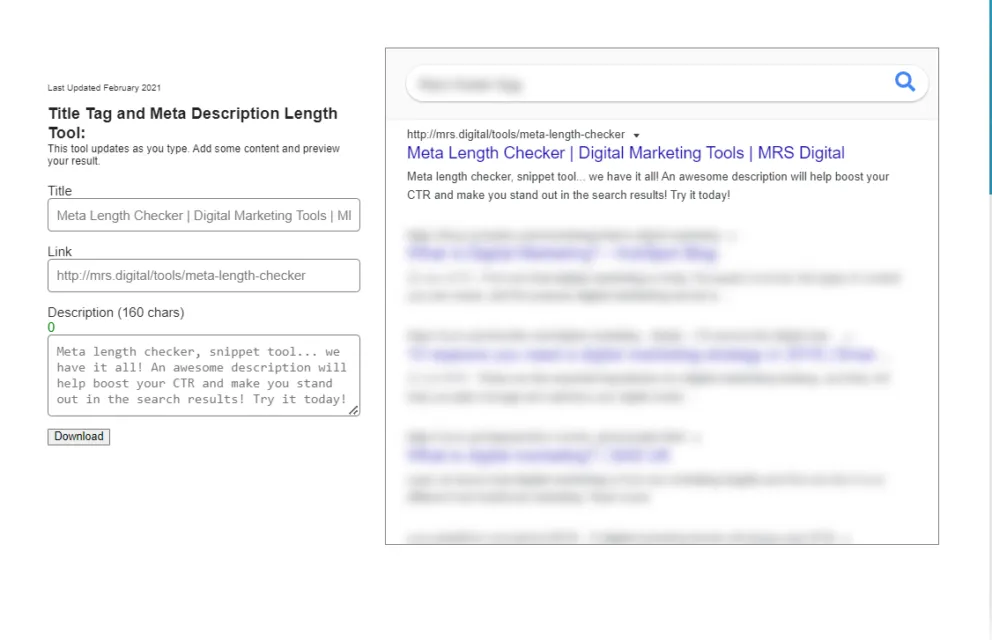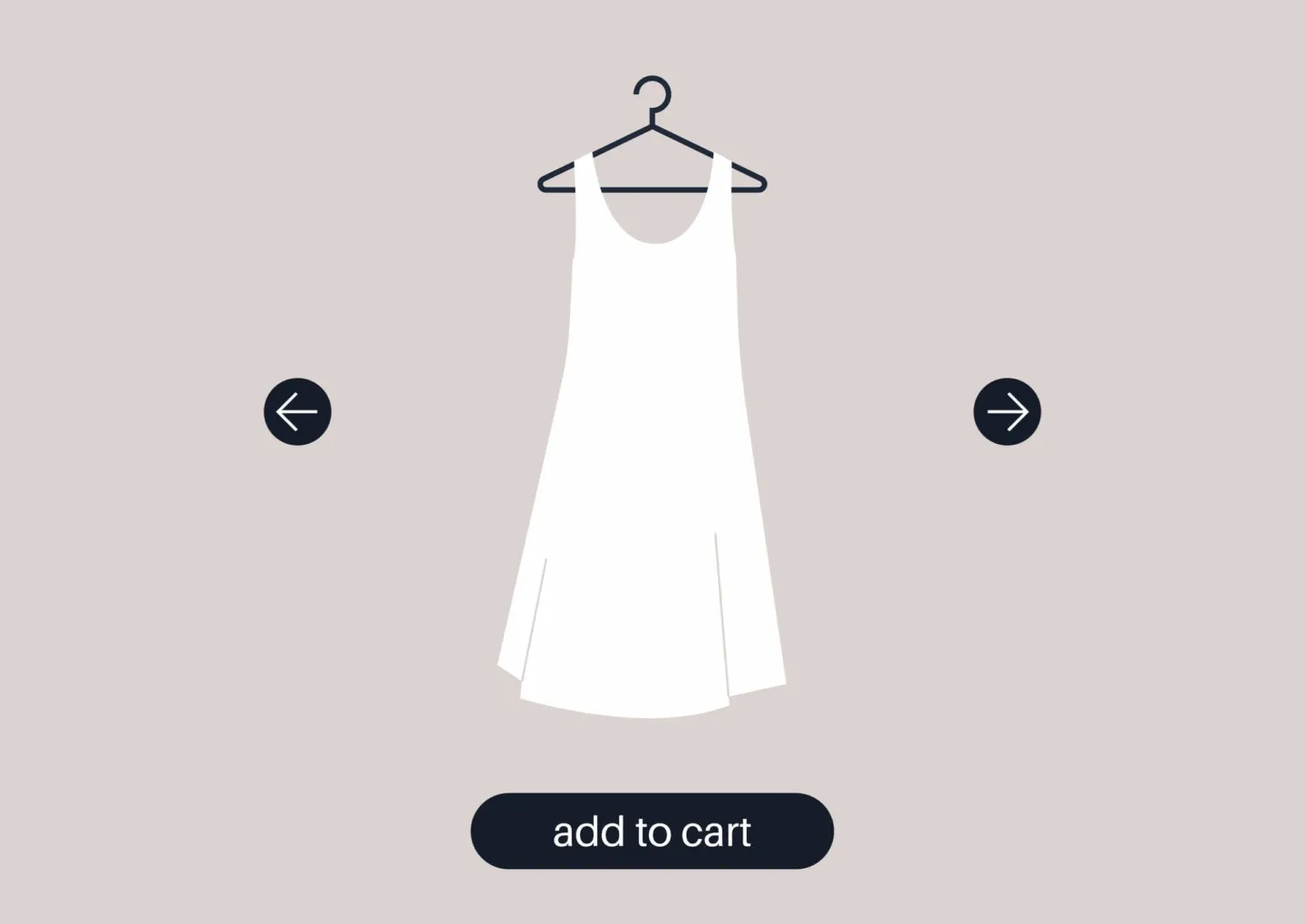Are Title Tags Still Important for SEO in 2025?
Yes, title tags are still very important for SEO – even if Google likes to alter what you write more these days. Title tags are still key when it comes to helping Google understand what your page is about, and their importance shouldn’t be underestimated.
Most people are aware of the importance of well-targeted on-page content and a website’s offsite authority with SEO, but many consider title tags and meta-descriptions as an afterthought – something to rush and put together last minute on upload. This shouldn’t be the case; they should be carefully targeted and well-thought out, utilising every bit of space available.
“Title tags are a major factor in helping search engines understand what your page is about.”
Moz
(Hear that? Major.)
What do title tags do?
The purpose of a title tag is two-fold, its first job is to help users understand the context of the page they are clicking on from the search results, and the second is to provide further contextual information to search engines. It helps to give them an idea of what a webpage is about.
Title tags are elements required in HTML and XHTML documents as <title>. They give information about the HTML document and are only visible in web browser tabs, search engine results and social media networks.
Title tags are also often the first part a user sees of a website in search results; so you need to make a good first impression if you want them to click through.
Our advice to webmasters has always been to write unique, descriptive page titles to describe to searchers what the page is about.
Google

Does Google Use Set Title Tags?
Yes and no, Google does use and display your title tags if they are fit for purpose, however, Google may change them at will depending on a user’s search.
If Google believes a title tag could be made more relevant to a user’s search query, thinks it is too long, or thinks it’s too spammy, it may shorten it or amend it.
As of August 2021, it was noted that Google appeared to be changing title tags entirely, instead lifting a heading or even internal link text from pages to fill in the title if it felt these better served a user’s query.
This new relationship between Google and title tags was coined ‘Titlepocalypse’ by some, as many felt they had lost control of their SEO efforts.
In fact, a study performed by Zyppy.com in September 2023 found that Google rewrote title tags 61.6% of the time in an analysis of 81,000 title tags from 2370 sites.
Despite this high percentage, it’s worth remembering you are only likely to see Google completely rewriting your title tags if:
✖ Your title tag is far too long and something could be snipped off the end
✖ Your title tag is extremely short
✖ Your title tag is “stuffed” with keywords that are very similar
✖ Your web page doesn’t have set title tags or contains repetitive “boilerplate” language
So… is it no longer worth optimising title tags?
We asked this very question of Google’s John Mueller too via Google Search Central:
“Ultimately, we want to know if the HTML title tag would still add SEO benefit even if it was not being selected for display?”
John’s answer was:
“… it still matters. The title tag still works for ranking purposes. Changing it to what Google has selected from my point of view doesn’t automatically make sense because just because one algorithm selects something as a title doesn’t mean it’s a better title.”
You can watch the full video here:
Not the easiest-to-understand response, but the answer is clear. Yes – even if Google isn’t always selecting your set title for display, it still aids optimisation. So, we would strongly recommend continuing to incorporate keyword optimised titles within your strategy.

What’s the difference between title tags and meta titles?
There is often some confusion surrounding the difference between ‘title tags’ and ‘meta titles’.
Title tags: <title></title> are the required element in mark up and are what Google takes into consideration, while meta titles: <meta name=”title”> simply define the meta content, nothing else. Today, Google rarely considers this tag, and many CMSs combine the two as one and the same. In essence, you should only put your time and effort into your <title> tags. See Google’s supported meta tags.
Here’s an example of a title tag in HTML and how it appears in search engine results:
HTML:

Search Engines:

How to write good title tags for SEO in 2025
Relevancy is key when creating the perfect title tag. It should include information that a target user is searching for.
This relevancy helps a search engine decide where to place your website. It also helps a user decide if the page they are about to click on is relevant and matches their intent.
Title Tag Length 2025
On average, Google tends to show the first 50 to 60 characters of a title tag.. However, title tags are not actually determined by character length, instead, Google displays up to a pixel width of 600px.
Therefore, it’s good practice to always check your title tag fits before you publish your content, otherwise it could be cut off.
Fortunately, we have an up-to-date SERP snippet optimisation tool for 2025 you can use. Try and keep it as succinct and user-friendly as possible!

Title Tags for Mobile
The common answer that you’ll find when looking for the display limit is 50 to 60 characters, or 600 pixels. But that can be misleading, especially when you consider that mobile is responsible for over 60% of Google search traffic.
In actual fact, Google display limits have been found to be longer on mobile, meaning titles are less likely to be frequently rewritten by Google. Nevertheless, it is still common for Google to display completely different titles on mobile and desktop devices.
To avoid the dreaded Google rewrite, the Zyppy.com study recommended that you try to optimise all titles so they remain between 51 and 55 characters, as this will keep them within the display limit.
Include your primary keywords. But be unique
Trying to keep your title tag unique but optimised at the same time can seem like a trying task. At a simple level, your primary keywords should be featured at the start of your title tag.
Moz found that keywords closer to the start have a higher impact on search rankings. Next, add secondary keywords, then your brand name.

The only exception to having your primary target keyword at the front is perhaps on your homepage, where you would likely want to feature your brand name at the front of your title tag.
Use dashes to separate keywords & USPs
There are a variety of ways to separate keywords / propositions / USPs in your title tags. Most people use commas, pipes and dashes, but which is best today?
Pipes (|) used to be a favoured separator in title tags as they take up minimal pixel width, however Google doesn’t appear to like them anymore. The Zyppy study showed it replaced or got rid of the pipe 41% of the time, but conversely, only removed dashes 19.7% of the time.
It’s also worth bearing in mind that more than two variations of a keyword are likely to be removed for display nowadays. We have spotted Google doing this numerous times, so keep your separators to a minimum and don’t go overboard with keyword spam.
Avoid using brackets
Historically, we used to recommend using brackets in title tags to encourage click though, however, in the aforementioned Zyppy study, they found that Google is more likely to change your title if using brackets. In their study, Google changed the page title with brackets 77.6% of the time and completely removed the words between the brackets 32.9% of the time.
Add odd numbers
We know how successful listicle content can be online when it comes to engaging users and including numbers in your title tags is a fantastic way to catch users’ eyes in the SERPs (in numeral form). When there’s a number on display, users are more likely to click through to your content as they can see how much content they can expect to digest, e.g. ‘Top 11 Headphones On Sale in 2025’.
It’s also thought that odd numbers are more effective in terms of attracting engagement. They are seen as more trustworthy because they insinuate that the content is created out of available information as opposed to being bulked up to make it balanced.
Don’t be literal
Your title tag should describe what a page does, not what it is. Words like “Home” and “Product Page” tell you what a page is. This doesn’t help Google or your users.
Title tags including these sorts of phrases have a lower click-through rate.
Avoid looking like spam
It’s important that your title tags demonstrate trust because they’re the doorway for your users. They need to trust that your page looks legit.
Having no, too much or random capitalisation of words can make users question the legitimacy of your site and not click through.
Overly long title tags that are cut off can sometimes look unprofessional, most commonly when the title tags are stuffed with keywords. In this example, Google would almost certainly replace your entire title tag:

Google comprehends semantic variations, so keyword stuffing is functionally pointless. Sticking to one or two core keywords per title tag also prevents keyword cannibalisation.
Make your title tags unique and engaging
Avoid duplicating your title tags where possible. As well as risking cannibalisation, it can confuse users who are relying on your title tags to find your pages.
If your website has hundreds of similar pages, you can use automation to speed up the process. But important pages deserve a human touch.
Don’t trust Google to write your tags for you
Just because it is more common for Google to re-write a site’s title tags these days, doesn’t mean you should put little to no effort into them. As we covered previously, if Google is rewriting titles, this is most likely because the above practices have not been followed.
Google’s dynamic rewriting isn’t an excuse to be lazy – Google’s lifted text won’t necessarily be the best title to encourage click through – especially as they may vary depending on the search.
Creating title tags for eCommerce sites

Title tags can be a nightmare for eCommerce sites. Every product page needs a unique and attractive title tag in order to attract shoppers and rank well in search.
Be honest about your offering. Don’t use the word “cheap” in your title tags just to get clicks. Focus on your real USP and trust your customers.
eCommerce sites are an instance where title tags going over the recommended pixel width is acceptable (without being ridiculous). Some product names are naturally very long, so in these instances, you want to make sure the core elements are visible at the start). Use our tool to preview!
Use semantic variations to avoid duplications
It’s important to ensure titles are descriptive and unique to each page. Long titles that vary with just one word’s difference (known as boilerplate content) are not good practice. Google’s example of this is the standardised title tag: “<band name> – See videos, lyrics, posters, albums, reviews and concerts”.
Be careful with your brand name
Avoid putting your brand name at the front of title tags on any pages that are not your homepage or brand specific. Having your brand name at the start of your website’s title tag works for homepages where you will predominantly receive traffic via brand search. However, for other pages, you should be placing your primary target keyword first as opposed to your brand name at the front of your title tag.
Additionally, we have seen Google now remove brand names off the end of title tags numerous times, especially on set title tags that are a bit longer. So, unless your brand adds value to a specific title tag, we wouldn’t recommend including it.
Do emojis appear in title tags in 2025?

While Google supports emojis in search results, it only displays them when they are relevant to the query. That’s why they might appear when you search “doughnut emoji”, but not appear on your “Cheapest Doughnuts in Hampshire?” search result.
Google filters out emojis from title tags if they are considered to be:
- Misleading
- Too spammy
- Out of place
So, demonstrating your “out of this world Doughnuts” with a rocket emoji would be considered misleading because you’re being hyperbolic.
There’s nothing wrong with including emojis in your title tags. Just don’t expect them to show up every time.
Don’t be afraid to test
There’s no formula to the perfect title tag. Experiment with new ideas, scout the competition and measure your click-through rate (CTR).
Natural feedback is one of the best forms of testing, so take the time to speak to your audience and understand what sort of headlines grab them. Maybe they like stats; in which case, include them where you can in your title tags.
The other sure-fire way to test is to look at your data. Split testing your title tags over a period of time will give you the data you need to make an informed decision on what a successful title tag looks like for you.

Still confused?
Remember to focus on describing your content in the title accurately and concisely. While doing so, including your keywords which have high search volumes and most importantly, relate to your content.
Weighing up the value of different aspects of SEO is an ongoing conversation. A lot of what we do operates in shades of grey and assumptions. But one area of SEO that is rarely debated is the optimisation and importance of metadata.
If you’re still baffled by metadata or any areas of SEO for that matter, we can help take the weight off your shoulders. Tell us more about your project and we’ll see how we can help get you the results you’ve always wanted.






